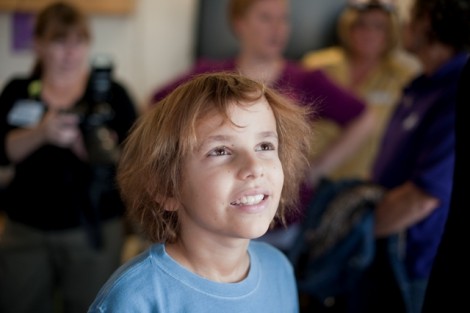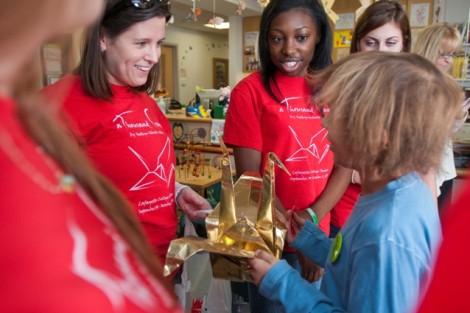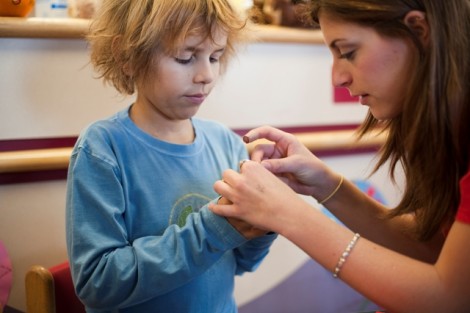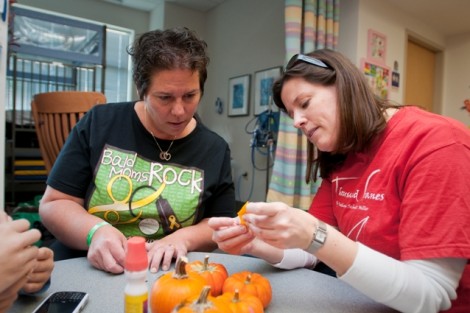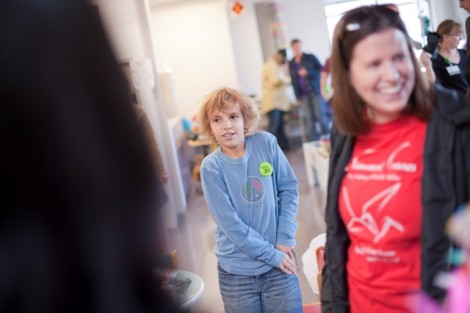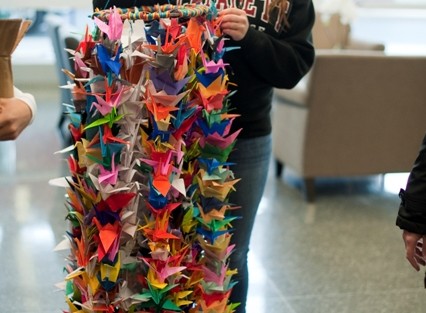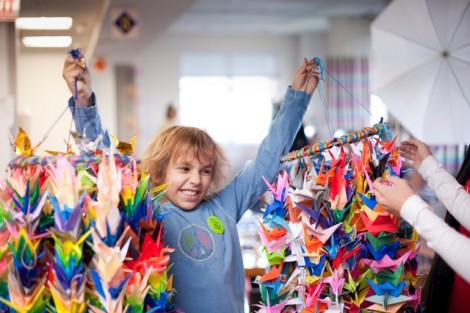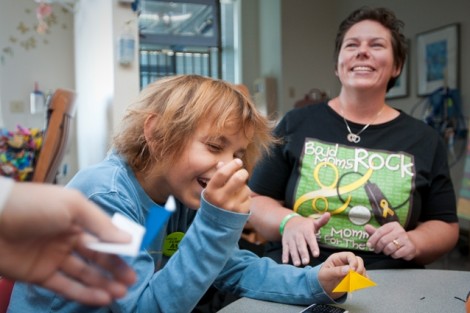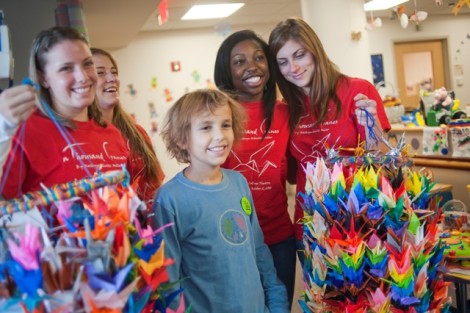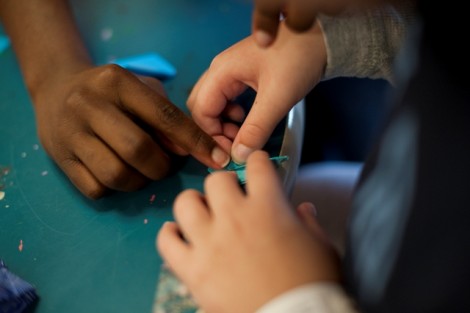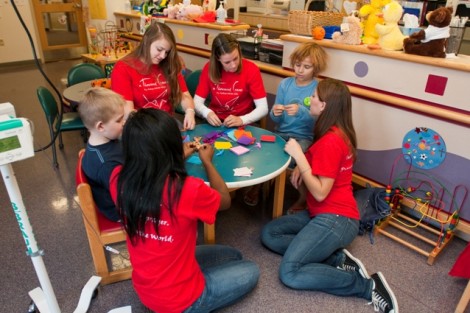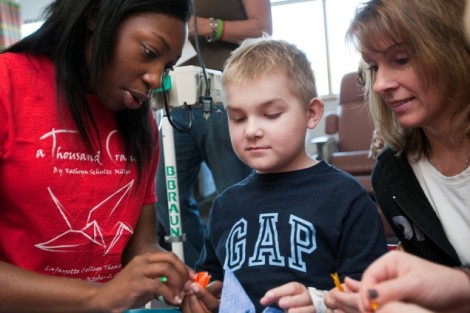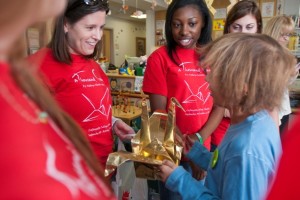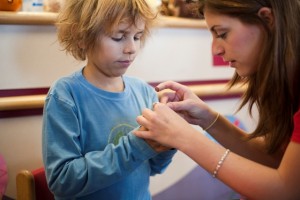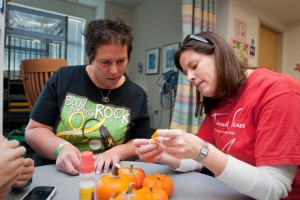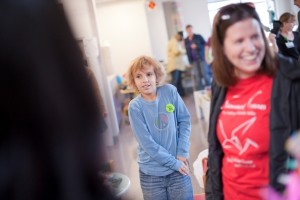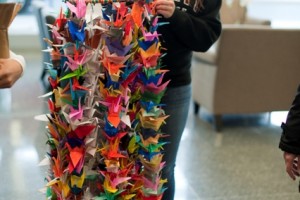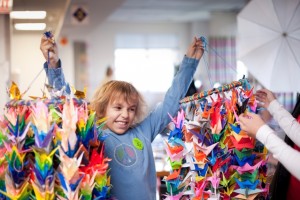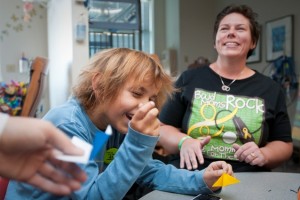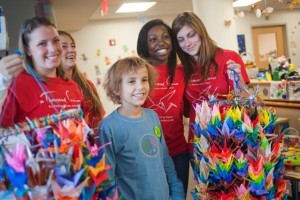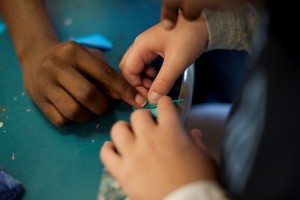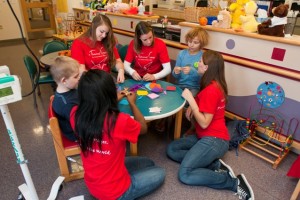An old Japanese legend says that anyone who folds 1,000 cranes will be granted one wish.
When Lafayette students delivered 1,000 paper cranes from the College Theater production of A Thousand Cranes to a 10-year-old boy with cancer last month, they had no idea their small gesture of hope would resonate with so many people in the Lehigh Valley and beyond.
But that’s exactly what happened after the Morning Call newspaper in Allentown wrote about David Heard’s donation of the Lafayette cranes to Lehigh Valley Hospital-Muhlenberg, and his subsequent wish to fold thousands more to festoon the four other pediatric cancer wards where he has been treated. David, the son of Tom Heard ’91, was diagnosed two years ago with stage IV neuroblastoma, an often terminal cancer of the nervous system.
“I literally have boxes of cranes from Easton Middle School, where David attends fifth grade,” says his mother, Susan, a former Lafayette employee. “We get a package at least once a day. They’re all over my house.”
And more are on the way. Lafayette students are folding cranes with female inmates of Northampton County Prison, the mother of 7-year-old leukemia patient Simon Ernst plans to drop off a thousand, and Amy Ahart ’97 and her family crafted a few hundred during a Halloween party. Even a language teacher at the Freeman Institute in Hawaii, where the play’s director, Mary Jo Lodge, spent two months this year studying Japanese culture, is creating origami birds.
Susan says she’s also receiving emails from strangers about the project, including one from a World War II veteran who was stationed on Iwo Jima.
“He has arthritis in his hands and can’t fold, but he sent us origami paper,” she says. “It’s truly amazing. When all is said and done, I know David will reach his goal of 5,000 cranes, and I think he’ll surpass it. Now he’s talking about making cranes for all of the pediatric hospitals in the country. I don’t know how many that is, but it’s a lot of birds.”
David and his parents had never heard the story of Sadako and the Thousand Cranes until Lodge invited them to the Williams Center for the Arts to see the show. The play is based on the true-life story of a 12-year-old girl who survives the atomic bombing of Hiroshima, but later develops leukemia. Hoping to stave off death, she starts to fold cranes but dies after making only 664, less than the 1,000 required by the gods for fulfillment of a wish. Her family and friends make the rest and bury her with them.
Lodge, assistant professor of English, also arranged for David to have a backstage tour and meet the student cast.
“He was just awestruck,” says Susan. “He was captivated by the story and the beauty of the costumes and the bravery of Sadako. He loved every minute of it. All the students were so sweet. He felt like he was a superstar.”
Initially, cast members planned to donate the cranes to the Hiroshima Peace Memorial but that changed after meeting the smiling David.
“We decided to keep our cranes local so they could make a difference right here in our community,” says Lodge.
David has developed friendships with cast members Brandi Porter ’13 (Olney, Md.) and Dana Pardini ’12 (Whitehall, Pa.).
“He’s an incredible kid,” says Porter. “He has so much personality.”
David’s magnetism was on display a few days after attending the play when Lodge, Porter, Pardini, Emma Kent ’14 (Riverhead, N.Y.), and Elise Buffinton ’14 (Lewisburg, Pa.) delivered the brightly colored cranes to the pediatric ward of Lehigh Valley Hospital’s Bethlehem campus. Lodge also brought along cranes used in an East Stroudsburg University production.
“Wow,” said David, eyeing the paper birds strung together on fishing line. “That’s a lot of cranes.”
It wasn’t long before the students hosted a crash course in the intricate art of origami, inviting other patients of the pediatric cancer ward to help.
“First you fold the square in half,” said Pardini, crouched in the seat of a plastic children’s chair. “Now take the top part and fold it over like that. Good. Now, we’re going to make a big mouth.”
A few more steps and David proudly held up his creation so his mother could see.
“Look, I actually did like 80 percent myself,” he said.
“So, we have to bring home 20 percent of a Lafayette student?” Susan said.
“The arm,” David quipped.
Susan says the play has opened a difficult dialogue.
“It gives us an opportunity to talk about other children who have cancer and what’s going to happen,” she said. “Sometimes he’ll say, ‘Maybe I’ll go to Lafayette,’ which isn’t realistic in his world. We try and keep it day by day and in the present.”
At the moment, David’s focus is on brightening the lives of other children who, like him, could use a wish right now.
“It’s made something that could be seen as horribly negative, hopeful and joyful,” Susan says. “The cranes are beautiful. What they stand for is beautiful. There’s a lot of hope in those birds.”
